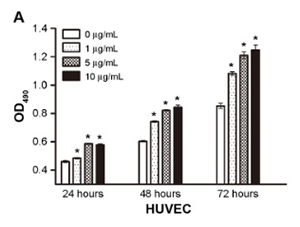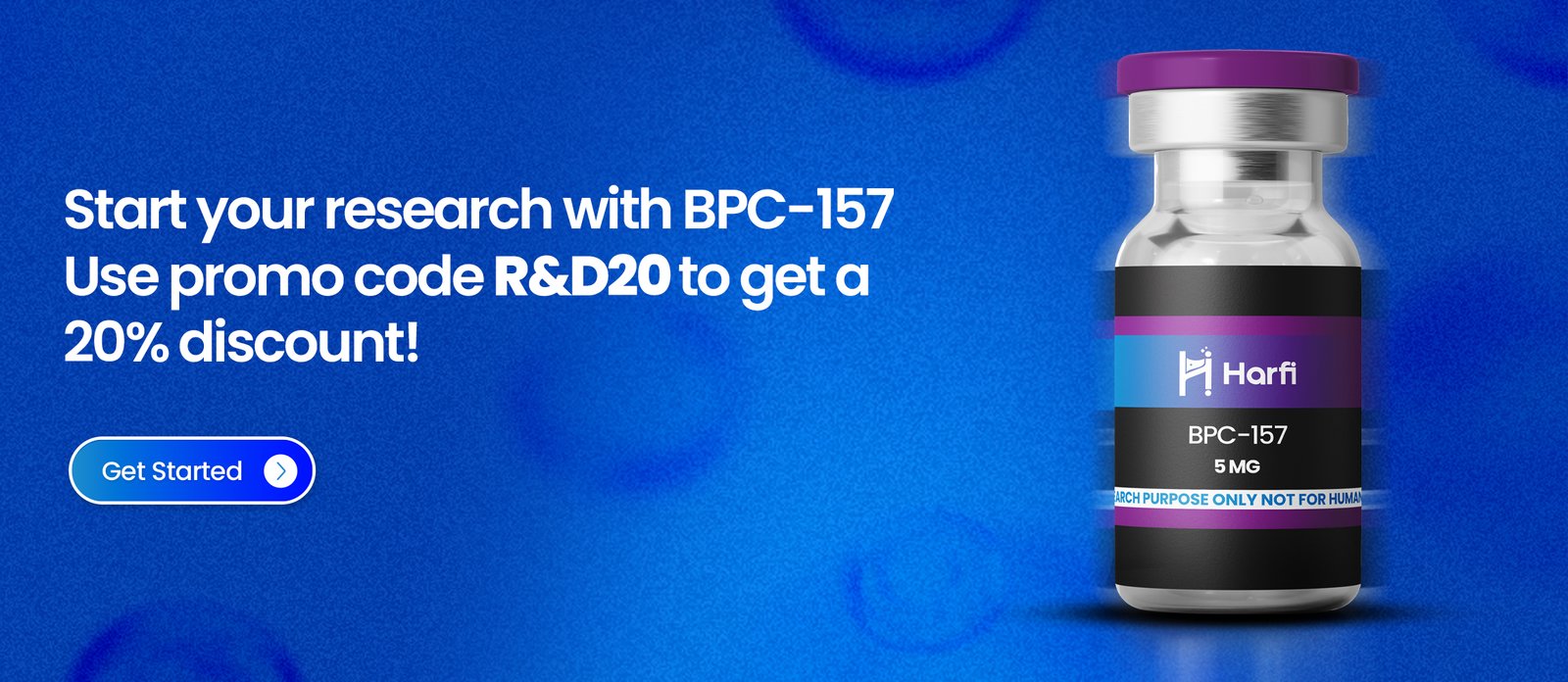BPC-157
A Peptide for Healing and Protection
BPC-157 is a penta-decapeptide composed of 15 amino acids, derived from the body protection compound (BPC) originally identified in human gastric juice. Research, primarily in animal models, has shown that BPC-157 accelerates the healing of various injuries, including damage to muscles, tendons, and ligaments.
Beyond its regenerative properties, BPC-157 offers protective effects for organs and plays a crucial role in preventing gastric ulcers. It also supports digestive health by addressing conditions such as leaky gut, irritable bowel syndrome (IBS), gastrointestinal cramps, and Crohn’s disease.
Additionally, BPC-157 exhibits analgesic properties and promotes faster healing of skin burns by enhancing blood circulation in damaged tissues. It stimulates angiogenesis, increases reticulin and collagen formation, and encourages the infiltration of macrophages and fibroblasts, making it a promising therapeutic candidate for wound healing and tissue repair.
PRODUCT USAGE
This product is intended for research purposes only. It is strictly designated for in vitro testing and laboratory experimentation. All information provided on this website is for educational purposes only. Any introduction into humans or animals is strictly prohibited by law. Only licensed, qualified professionals should handle this product. It is not a drug, food, or cosmetic and must not be misbranded, misused, or mislabeled as such.
Introduction
Body Protection Compound-157 (BPC-157) is a synthetic derivative of the naturally occurring body protection compound (BPC), a protein found in the human digestive tract. BPC plays a crucial role in protecting the gastrointestinal lining, promoting tissue repair, and stimulating blood vessel growth.
BPC-157, a pentadecapeptide consisting of 15 amino acids extracted from the larger BPC protein, retains many of its regenerative properties. Research suggests that BPC-157 influences several biological processes, including:
- Wound healing
- Blood vessel growt
- The coagulation cascade
- Nitric oxide generation
- Immune system function
- Gene expression
- Hormone regulation (particularly in the gastrointestinal nervous system)
Structure
Sequence:Gly- Glu-Pro-Pro-Pro-Gly-Lys-Pro-Ala-Asp-Asp-Ala-Gly-Leu-Val
Molecular Formula: C62H98N15O22
Molecular Weigh: 1419.556 g/mol
PubChem CID: 108101

BPC-157 and Wound Healing
Naturally, it plays a vital role in preserving the integrity of the gastrointestinal (GI) mucosal barrier, protecting underlying tissues from the harmful effects of gastric acid, bile, and other digestive substances. A key component of this function is the recruitment of fibroblasts. Studies have shown that BPC-157 influences fibroblast proliferation and migration in a dose-dependent manner, both in vitro and in vivo[1]. As essential contributors to wound healing, fibroblasts produce critical extracellular matrix proteins such as collagen, fibrin, and elastin, which support tissue repair and regeneration.

Vascular Growth and Collateralization
BPC-157 exhibits remarkable angiogenic properties by significantly enhancing the proliferation and development of endothelial cells, which form the inner lining of blood vessels. Studies in rats have shown that this peptide accelerates the growth of collateral blood vessels in ischemic conditions. While its primary effects have been observed in the gastrointestinal (GI) tract, emerging evidence suggests its potential benefits in cardiovascular, neurological, and muscular tissues. These findings indicate that BPC-157 may serve as a therapeutic option for conditions such as stroke and heart attack while also shedding light on mechanisms involved in ischemic injury recovery.
Research on chicken embryos suggests that BPC-157 promotes vascular growth by stimulating VEGFR2, a key cell surface receptor involved in the nitric oxide signaling pathway. VEGFR2 plays a crucial role in endothelial cell growth, proliferation, and longevity.
In cell culture experiments, BPC-157 has demonstrated the ability to promote vascular “running”—the process by which blood vessels grow toward injured areas or bypass blockages to restore blood flow and protect cellular function. This characteristic suggests the potential for BPC-157 to serve as an effective oral treatment for slowly developing arterial obstructions, such as those seen in atherosclerotic heart disease. If further validated, this research could lead to alternatives to surgical procedures like stenting and coronary artery bypass grafting in the future.
BPC-157 and Tendon Healing
BPC-157 has shown positive effects in animal models of tendon, ligament, bone, and other connective tissue injuries due to its roles in fibroblast recruitment and blood vessel growth. Tendon and ligament injuries are notorious for slow healing due to limited blood supply, which restricts the arrival of fibroblasts and other essential cells for tissue repair.
In laboratory and animal studies involving rat tendons, BPC-157 has been found to enhance collateralization and increase fibroblast density in injured tendons, ligaments, and bones. These findings suggest that BPC-157 is more effective than hormones like bFGF, EGF, and VGF in promoting healing in connective tissues.
Experiments using FITC-phalloidin staining have revealed that BPC-157 strongly stimulates F-actin formation in fibroblasts. F-actin is vital for cell structure, particularly in cell migration. Western blot analysis has further shown that BPC-157 increases phosphorylation levels of paxillin and FAK proteins, both essential in the cell migration pathway.
Antioxidant Properties
Studies in rats have demonstrated that BPC-157 has strong antioxidant properties, counteracting oxidative stress markers such as nitric oxide and malondialdehyde (MDA). These findings highlight its potential as a potent antioxidant. Additionally, research indicates that BPC-157 reduces the generation of reactive oxygen species in the gastrointestinal tract.
Further studies exploring BPC-157’s delivery through modified Lactococcus lactis bacteria have shown a significant increase in peptide levels within cell cultures. This research suggests the possibility of using probiotic-based delivery methods for BPC-157 in the future.
BPC-157 and Drug Side Effects
One of the major challenges in long-term pharmaceutical use is managing side effects. Nonsteroidal anti-inflammatory drugs (NSAIDs) like ibuprofen, for example, can increase the risk of gastric bleeding and heart attacks with prolonged use. Addressing these side effects while maintaining therapeutic efficacy remains a crucial goal in modern medicine.
BPC-157 has demonstrated the ability to counteract the side effects associated with NSAIDs, psychiatric medications, and certain heart drugs. While it is expected to mitigate gastrointestinal side effects, studies indicate that BPC-157 may also protect other organs, including the brain and heart.
In rat studies, BPC-157 has been found to shield against QTc prolongation in the heart—a condition that can cause severe arrhythmias. QTc prolongation is often triggered by medications used to treat diabetes, schizophrenia, and other psychiatric disorders. Additionally, BPC-157 has shown potential in preventing neurological side effects caused by psychiatric medications, such as catalepsy and sensory disturbances. These findings suggest that BPC-157 could enhance patient adherence to psychiatric treatments by reducing their adverse effects.
BPC-157 and Bees
Colony Collapse Disorder (CCD) is a phenomenon in which entire honeybee colonies experience sudden population declines. While the exact causes remain uncertain, one contributing factor appears to be infections in bee digestive tracts caused by the fungus Nosema ceranae.
Researchers have investigated the effects of BPC-157 on honeybees by supplementing their diet with the peptide. The results showed reduced fungal damage in the bees’ gastrointestinal tracts, leading to increased hive survival rates. Importantly, these trials were conducted in real-world field settings, highlighting the potential for BPC-157 as an oral treatment to protect bee populations, which play a critical role in global pollination and food production.
Future Research
BPC-157 remains the focus of active research in various cell culture and animal models. This peptide shows promise not only as a therapeutic agent for wound healing and vascular growth but also as a tool for studying the underlying mechanisms of these processes. Insights gained from BPC-157 research could contribute to advancements in angiogenesis—an essential process with implications in tissue regeneration, cancer development, and embryonic growth.
Notably, BPC-157 has demonstrated minimal side effects and exhibits moderate oral bioavailability and excellent subcutaneous bioavailability in mice. However, it is important to note that dosage per kilogram in animal studies does not directly translate to human application.
BPC-157, as available from Harfi, is intended solely for educational and scientific research purposes. It is not approved for human consumption, and only licensed researchers should consider acquiring it for further study.
DISCLAIMER: FOR INFORMATIONAL AND EDUCATIONAL PURPOSES ONLY
All articles and product details provided on this website are strictly for informational and educational purposes.
The product information presented here applies solely to in-vitro studies—experiments conducted outside of living organisms, such as in laboratory settings. These products are not classified as medicines or drugs and have not been approved by the FDA for the prevention, treatment, or cure of any medical conditions, ailments, or diseases.
Furthermore, the use of these products in humans or animals is strictly prohibited by law.

